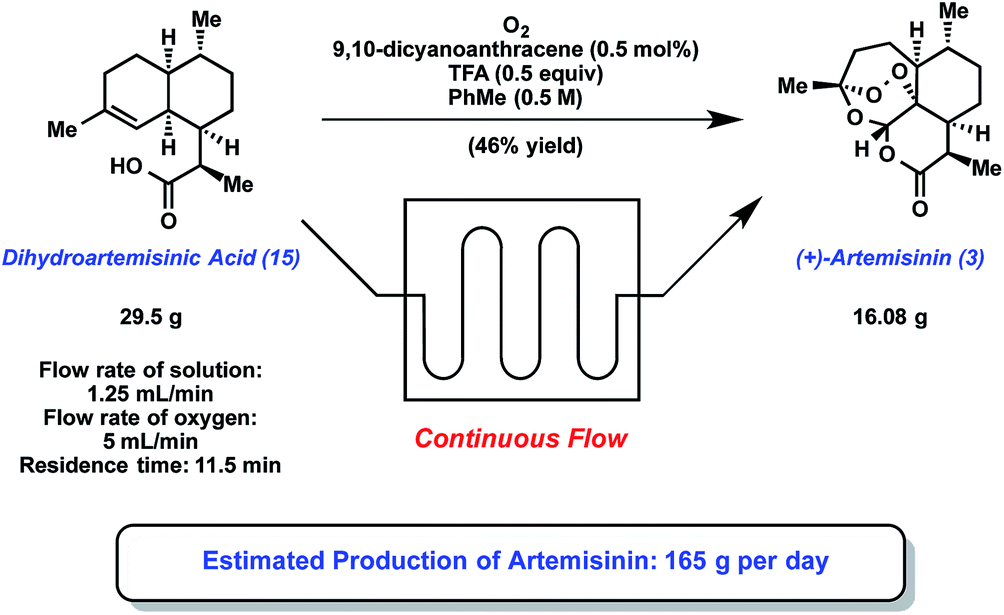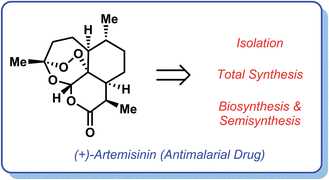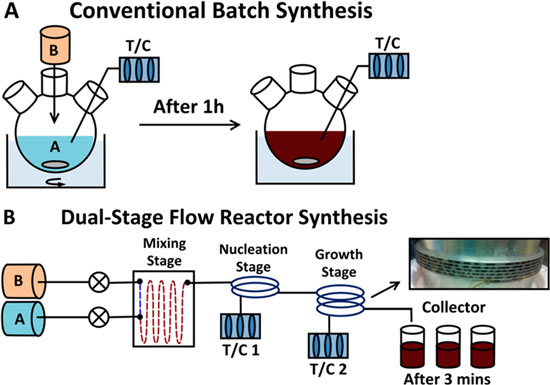
7 Semi-synthesis of artemisinin using continuous flow. The Seeberger group has recently developed a continuous flow approach to the production of …
In the developing world, multi-drug resistant malaria caused by the parasite Plasmodium falciparum is an epidemic that claims the lives of 1–3 million people per year. Artemisinin, a naturally occurring small molecule that has seen little resistance from malarial parasites, is a valuable weapon in the fight against this disease. Several easily accessible artemisinin derivatives, including artesunate and artemether, display potent antimalarial activity against drug-resistant malaria strains; however, the global supply of artemisinin from natural sources alone remains highly inconsistent and unreliable. As a result, several approaches to artemisinin production have been developed, spanning areas such as total synthesis, flow chemistry, synthetic biology, and semi-synthesis. This review highlights achievements in all areas, in addition to the interplay between synthetic biology and synthetic chemistry that has fueled the recent industrial-scale production of artemisinin.

Synthetic chemistry fuels interdisciplinary approaches to the production of artemisinin
DOI: 10.1039/C4NP00113C
Neil garg

http://www.chem.ucla.edu/dept/Faculty/garg/Garg_Group/About_Neil.html















 Charlotte
Charlotte 




